WE "Carafe" Prototype
F-54523| (What's this copyright
notice?) |
The Carafe set was intended to replace the 211 hang-up sets, that still required an external subset for electronics and ringer. Thus it had to be self contained and fit wall, deskside and counter applications where space was at a premium.
In 1962 (shortly after the introduction of the Princess sets in 1959), this model was used in a Providence, R.I. Product Trial. Customers included 110 businesses. Carafe sets replaced the current sets on single lines, multi lines and PBX lines. Interviews were conducted after about 8 weeks of service.
It was never produced in volume.
For much more info on its history, see the TCI Singing Wires cover article in the November 2010 issue,
"Hung Up in Field Trial. Critics put the Carafe on Hold."
www.telephonecollectors.org
For the Carafe's position in the Trimline Development Timeline, go to this site page.
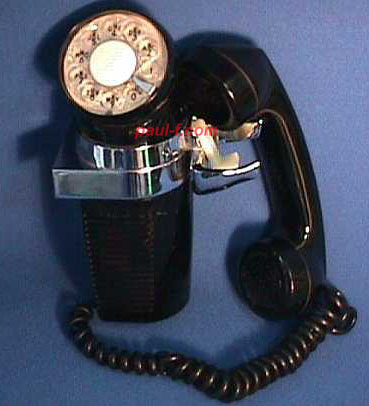
This set was auctioned in 2000.
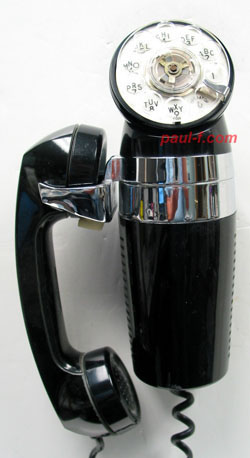
Photo from Richard Rose
This phone has a substantial metal backplate and a heavy cast metal cradle.
The dial appears to be like the production Trimline #10 dial, with the moving fingerstop to reduce dial size.
The dial mount swivels in all directions.
Handset is a standard G1.
Note the vents at the bottom for the ringer sound.
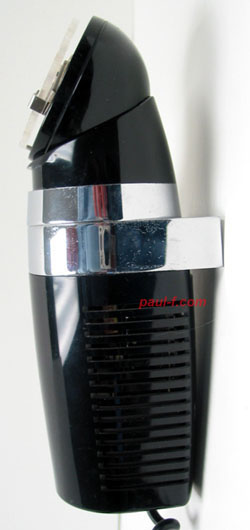
Photo from Richard
Rose
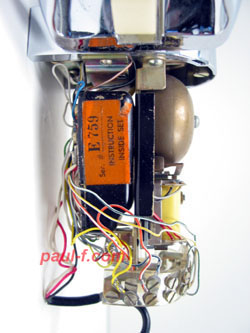
Photo from Richard Rose
Uses a 4010 network.
There is a P1 type ringer with an adjustment wheel that extends through the base to control ringer volume. The ringer is marked F55110 5-62.
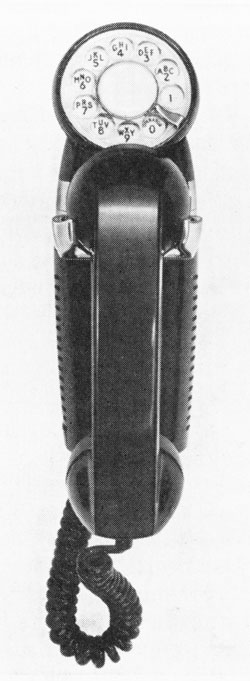
The Carafe was designed by Bell Telephone Laboratories and produced in the Western Electric model shop at the Indianapolis Works.
At the time it was in field trial by the New England Telephone Company.
(Thanks to Jeremy Walters for this info.)
While customers overwhelmingly preferred it
to the previous equipment, they criticized enough elements to send the
engineers back to the drawing board. They felt the dial finger
holes were too small, the moveable finger stop felt strange and the
number card location was awkward.
In addition, installers had problems with the mounting brackets and the accountants decided it was too expensive
In addition, installers had problems with the mounting brackets and the accountants decided it was too expensive
